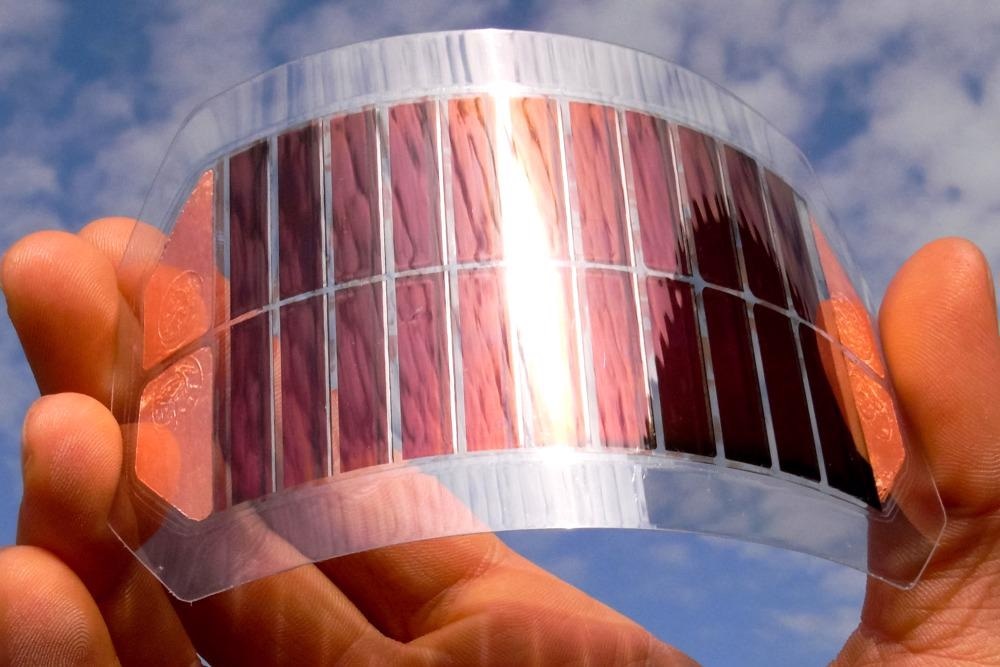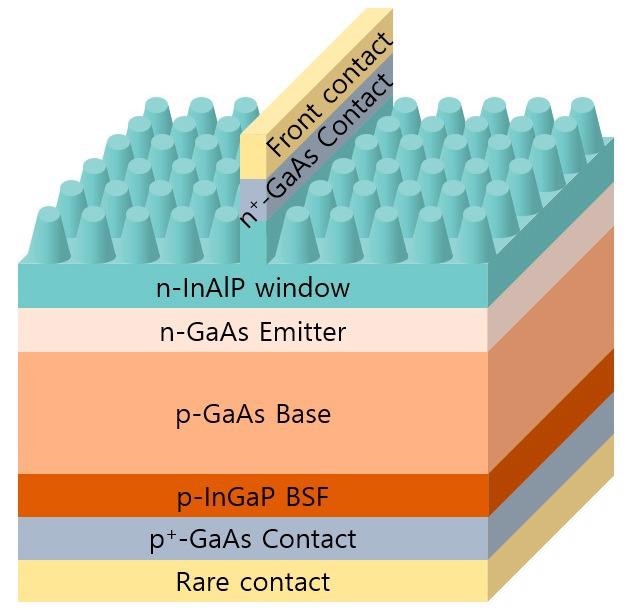In a study published in the journal Applied Sciences, a GaAs singular-junction photovoltaic cell's nanotextured InA1P window sheet was used to reduce reflection across a wide range of wavelengths.

Study: Efficiency Enhancement of GaAs Single-Junction Solar Cell by Nanotextured Window Layer. Image Credit: LuYago/Shutterstock.com
The nanotextured surface influenced reflectivity attenuation throughout a wide wavelength range, increasing the current density and efficiency of the GaAs single-junction photovoltaic cell and alleviating the efficiency decline at high incidence angles of the light source.
III-V Semiconductor Photovoltaic Cells
Flexible III-V semiconductor-based photovoltaic cells (PVCs) have fewer thermal losses when compared with silicon-based PVCs. This is due to the fact that gallium arsenide (GaAs) PVCs have physical direct bandgap and lattice matching characteristics, which implies that charge carriers travel through PVCs without recombining. As a result, even by simply using a thin sheet, III-V semiconductor-based PVCs exhibit remarkable efficiency.
The photocurrent conversion efficiency (η) of GaAs PVCs anticipated by hypothetical computations or proven by real manufacturing has been discovered to be greater than that of Si in photovoltaic devices. Flexible PVCs used in wearable or portable devices benefit from improved efficiency and thin structure.

Schematic structure of the NT InAlP window layer GaAs 1J SC. © Kim, C.-W., Park, G.-Y., Shin, J.-C., & Kim, H.-J. (2022).
Improving Efficiency of III-V Semiconductor Solar Cells
The difficulty with a pliable PVC connected to a bent body is efficiency deterioration when compared to flat PVC due to the light source's slanted incidence angle.
Different strategies for improving effectiveness have been devised to relieve the efficiency loss, such as deposition of flat anti-reflection coated (ARC) films and 3D surface patterning, like texturing the PVC window area and patterning the oxide film overlaying the PVC.
Whenever a light source is shone on the nanotextured (NT) surface, light of varying wavelengths is equally distributed over the NT layer, where the index of refraction progressively changes due to the moth-eye effect. It enhances the minimal short-circuit current density (JSC) and efficiency by increasing light transmission and optical path distance.
Shortcomings of Previous Research
A previous study created Singular-junction InGaP photovoltaic cells using a unique micro-hole array surface texturing technique. This textured PVC outperformed a plain surface PVC in terms of JSC, external quantum efficiency (EQE), and efficiency. However, the efficiency with varied incidence angle (θ) of light source was not tested; therefore, the omnidirectional impact of textured PVCs cannot be determined.
A separate study has also created a ZnO nanoneedle layer to cover the InGaP/GaAs/Ge triple-junction PVC.
The nanoneedle-shaped PVC lowered reflectivity while improving JSC, EQE, and efficiency. Furthermore, the efficiency with varied θ was tested, revealing that textured PVCs had an omni-directional influence as compared to flat PVC with a plain surface. However, no study has offered a performance comparison between NT PVC and ARC PVC, even though ARC PVCs have been used more in commercial and industrial applications than PVCs with the plain surface.
These studies have only shown the advantage of nanostructures by comparing nanostructured photovoltaic cells with to naked photovoltaic cells without ARC.
Salient Features of this Study
The study's originality stems from contrasting the photovoltaic cells with the ARC thin-film utilized as a functional fabric with the photovoltaic cell with the InA1P window layer's nanostructure. It is also interesting to analyze the efficiency change in relation to the incidence angle.
The NT window film of inverted epi-grown GaAs 1J PVC was created in this work utilizing polystyrene (PS) beads. The constructed NT PVC's observed performance was contrasted with that of the flat ARC PVC. Moreover, the efficiency with different θs of the source of light was investigated and compared.
Important Findings of the Study
Based on the inhibited reflectance, improved EQE spectrum, and JSC, the planar ARC and NT InA1P window PVC boost light absorption more than the plain-surfaced PVC.
The NT surface, in particular, reduces reflectance and impacts across a wide wavelength range, including the entire wavelength spectral range of the GaAs 1J PVC. Furthermore, the NT PVC was discriminated from the ARC PVC by evaluating the relieved efficiency loss of the NT PVC against the efficiency loss of the ARC PVC as θ increased, which corresponded to the study's goal of investigating the ubiquitous directionality of the NT surface on PVCs.
The idea and production process provided here are expected to improve high-efficiency flexible PVCs.
Continue reading: Modeling Wing Nanostructures to Improve Solar Technologies.
Reference
Kim, C.-W., Park, G.-Y., Shin, J.-C., & Kim, H.-J. (2022). Efficiency Enhancement of GaAs Single-Junction Solar Cell by Nanotextured Window Layer. Applied Sciences, 12(2). Available at: https://www.mdpi.com/2076-3417/12/2/601
Disclaimer: The views expressed here are those of the author expressed in their private capacity and do not necessarily represent the views of AZoM.com Limited T/A AZoNetwork the owner and operator of this website. This disclaimer forms part of the Terms and conditions of use of this website.